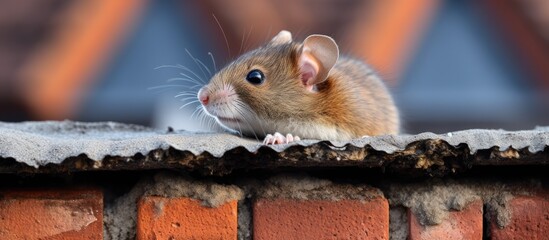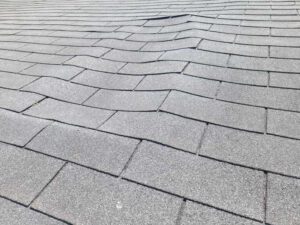Rats are very common pests for homeowners. Droppings, gnaw marks, exposed wiring, and hearing scurrying sounds at night are all signs of a problem. They are adept climbers and like to nest in attics, rafters, walls, and tree limbs.
They can enter a home through openings as small as the size of a quarter. They are also known carriers of diseases such as typhus, leptospirosis, and the bubonic plague. Roof Rat Removal Service Texas experts can help you deal with this problem.
 Prevention
Prevention
A rat infestation can do more than just damage your property; it can spread disease, destroy books, clothing, and food, contaminate water, and cause electrical problems as rats chew through wires to strip their protective coating. It’s important to get rid of a rodent infestation as quickly as possible before it gets out of hand because rats breed quickly. When they do, they can produce over two hundred rodent offspring within a few months.
Rodents are omnivores and will eat both plant and animal matter, which means they can spread disease by transmitting bacteria such as murine typhus, leptospirosis, salmonellosis, and plague. They also carry parasites that can affect humans such as fleas, ticks, mites, and lice.
Unlike the Norway rat, roof rats are excellent climbers and are often found nesting in piles of undisturbed debris or materials such as yard debris, stacks of firewood, attics, sheds, and thick foliage like ivy and brush. Since they are expert climbers, they can gain entry into homes through cracks and crevices in the foundation, walls, and roof.
The best way to prevent a rat infestation is through sanitation and sealing up potential entry points. All windows and vents should be screened, and all exterior doors should have tight-fitting, solid sweeps. Cracks and gaps should be sealed with caulk or steel wool, particularly around the foundation of the home. All trees, shrubs, and bushes should be trimmed to keep them from overhanging the roof and creating an easy access point for rats.
Water sources are also attractive to rat colonies, and standing water such as puddles, ornamental ponds, bird baths, outdoor faucets, air conditioner drains, and pet water dishes can all attract rats to your property. Regularly fixing outside water leaks and cleaning and filling puddles will help deter rats.
In addition, removing hiding spots for rats such as cluttered sheds and garages, firewood piles, overgrown vegetation, and stacks of hay or other material will help prevent them from finding shelter. Finally, keeping garbage cans tightly closed and removing trash regularly will prevent rats from gaining access to food inside the home.
Inspection
Roof rats are well-known for their damaging and destructive habits, gnawing through electrical wires and causing house fires, as well as carrying bacteria and parasites that can be dangerous to humans. They also spread diseases via their urine, droppings, and saliva.
Prevention is the best way to avoid these pests. Eliminating the rat food sources that attract them by cleaning up debris piles, raking and composting fallen leaves and fruits, and keeping garbage cans tightly closed is essential. You should store bulk foods in sealed containers, wipe up crumbs on counters and tables, and keep pet food and water in hard-to-reach places like laundry rooms and sheds.
If you want to take it one step further, you can invest in an ultrasonic deterrent that produces high-frequency sounds that are inaudible to human ears but distresses rodents. These devices can be purchased online or at many hardware stores and home improvement centers.
But if you find yourself dealing with an existing rat infestation, it’s important to act fast. The longer you wait to take action, the harder it will be to eliminate them. To prevent the re-entry of these troublesome pests, perform a thorough inspection around your home and garage to find and seal potential entry points, which can include holes in the roof, rafters, gables, and eaves; loose or damaged chimney caps; floor drains without tight-fitting grates; and gaps under sinks and appliances.
Check for gnaw marks on wooden surfaces and support beams, squeaking noises coming from walls and ceilings, and urine stains or odor around the property. You may also notice discarded gnawed fruit in the yard, hollowed-out trees and branches, or gnawed pipes and electrical wiring.
Incorporating robust exclusion techniques, vigilance in cleaning and sanitation practices, and proper landscape management can significantly reduce the chance of a rat invasion. If the problem persists, however, it’s important to call in a professional wildlife control company like Trutech for expert rat removal and trapping services. A state-certified wildlife removal specialist can provide a comprehensive solution to your rat infestation in the most effective, efficient, and safe manner possible.
Trapping
Taking a preventive approach to roof rat control is essential. These adaptable creatures can live in both upper and lower parts of structures, as well as in-ground burrows, depending on available food and shelter, and their ability to produce many litters each year means that even a small infestation can quickly become out-of-control.
In the home, regular inspections are important for identifying potential entry points and promptly addressing them. Rats can squeeze through holes that are less than an inch in size, so check frequently for cracks, gaps, and openings around pipes, vents, and roof shingles. Seal these with steel wool and caulk to keep rats out. In addition, regularly inspect the yard and shrubbery to minimize rat hiding places; keep grass and branches trimmed low, and store firewood away from the house.
Another key element of prevention is putting out birdseed and pet foods in sealed containers to deter rodents from visiting. Additionally, make sure outdoor trash cans are tightly closed and don’t overfill. Finally, consider using natural rat repellents such as peppermint oil, citronella, and ammonia near possible entry points to discourage them from entering.
Rats are nocturnal, so if you hear scurrying in the walls or ceiling at night, or see grease marks along the inside of cupboards and baseboards, it’s time to act. Also watch for droppings that are about an inch in length, gnaw marks on or in your home, and a musty odor.
Regular pest control consultations by a professional can help prevent and control rat infestations. An expert will be able to provide a more thorough examination of your property and recommend the best strategies for your situation. For instance, trapping may be recommended, if necessary, in conjunction with pest exclusion techniques to ensure that the problem is eliminated for good. Integrated Pest Management (IPM) is an effective method that combines physical, mechanical, and chemical control methods to reduce pest populations without harming people or pets. By combining regular inspections and monitoring, prompt addressing of structural vulnerabilities, sanitation, and trapping with other non-chemical methods such as IPM, homeowners can create living environments that are less attractive to rodents.
Removal
If a rat infestation is out of control, it’s important to consult professionals for expert rat extermination services. These rodents are well known for their destructive nature, gnawing through wires, insulation, and wooden structures. They can also transmit diseases through their droppings. Fortunately, many preventative measures can be taken to deter a rat invasion.
One way to make your property less appealing to rats is by sealing entry points. These pests can squeeze through openings as small as 1/2 inch, so it’s vital to routinely inspect for cracks and crevices in attics, rafters, gables, walls, and eaves. Using caulk and other materials can effectively block these openings. In addition, regularly trim any trees and shrubs that overhang the roof. Rats are adept climbers and can use these branches to gain access to the attic.
Rats can thrive in areas where food and water are readily available, so it’s also important to eliminate any sources of these commodities in outdoor spaces. This can be done by removing plant species like vines and ivies, which are popular nesting sites for these pests. Keeping trash containers tightly sealed and properly disposed of can also help reduce the likelihood of an infestation.
Lastly, it’s crucial to regularly inspect for signs of rat activity. Droppings and rub marks along walls and other surfaces can indicate a high level of traffic in an area, and food crumbs and spilled pet food can attract these rodents. Proper food storage is also essential. Rats are opportunistic eaters and can scavenge even the smallest of food scraps, so always store pantry items in airtight containers.
Finally, rat traps can be a great tool for controlling an infestation. However, the type of trap used is critical. Glue traps, for instance, are often inhumane because rats are trapped and then stuck to the glue, which can cause them to suffocate or bleed to death. Alternatively, poisons can be used to kill rats, but these poisons are also extremely dangerous for humans because they contain anticoagulants that can cause internal bleeding, swelling, seizures, and more.





